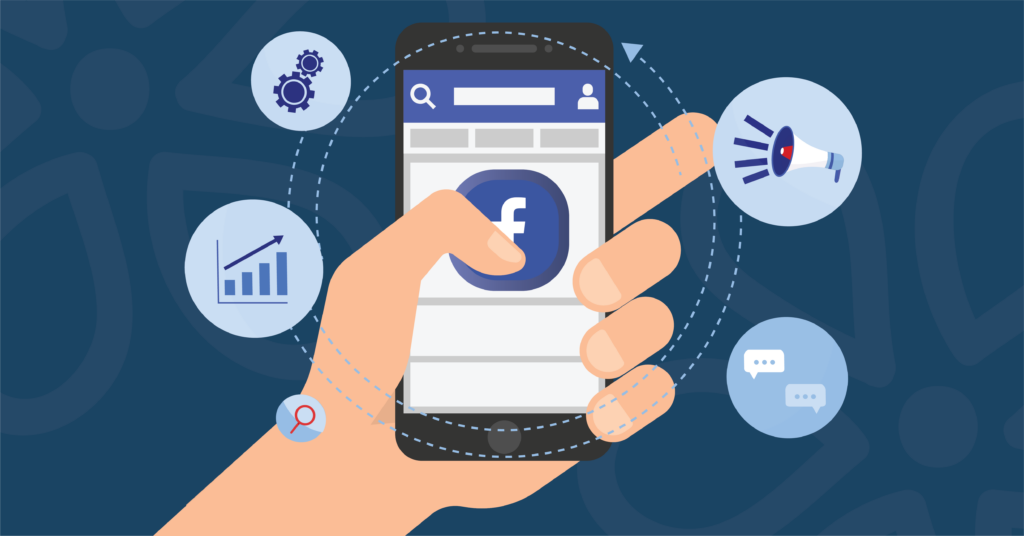Boosting Your Email Engagement for Lasting Results
Email is a cost-effective marketing channel. Shift your focus less from open rates to deliverability, clean email lists, and personalized content.
Ah, email, the snail mail of the Internet. The littlest brother of the marketing channel family. Usually overlooked as the least important part of one’s marketing efforts, email is often relegated as a way to amplify a sale, net some easy revenue by upselling existing customers, or do some lazy branding through low-effort content emails based around holidays (and usually connected to a sale).
The reality is that many brands are leaving money on the table by neglecting email’s position as a crucial marketing channel. Not only is it the most intimate marketing channel, where you can speak directly to your customer and earn their business for life, but it’s also one of the most cost-effective channels to put your money into. According to email marketing company HubSpot, email nets $42 in sales for every $1 spent. That’s an eye-watering 4200% ROI!!
And perhaps most important of all when it comes to marketing, people just simply like engaging with email – when it’s done right. Amongst all generations from Boomers to Gen Z, 68% of people said they preferred email as their way to be marketed to (Bluecore).
The opportunity is ripe to grow your bottom line via a robust email marketing campaign – and it’s not even that difficult. The trick is to understand the trends and regulations that rule the email marketing ecosystem. Here we’ll discuss what to consider when developing an email engagement strategy.
Unstable Email Climate
Marketers will always remember 2021 as the year iOS 14.5 dropped, changing the landscape of digital marketing in one update. Engagement metrics and KPIs that had long been benchmarks for success in terms of engagement suddenly became almost irrelevant overnight as millions of people opted out of sending their data through to brands.
At first, email was one of the few marketing channels not affected by the iOS 14 changes, but then came Apple’s latest update, iOS 15. Following up on their quest to secure data protection for their users, this new update included Apple’s Mail Privacy Protection, which allows users to block their data being shared when you open an email.
All a user has to do is click a button in the Apple Mail app (this feature is turned on automatically in other email clients like Gmail) saying they wish not to share their data. The software then filters out every email sent or received, sending those emails to a proxy server, before landing in the receiver’s inbox. In other words, the application scrambles your data so that your preferences and demographic data can’t be linked to your identity.
How this will affect marketing long-term remains to be seen, but one thing that is already clear is that the gold standard of email marketing KPIs – Open Rate – is rapidly becoming a thing of the past.
As 41% of people who use iPhones globally will be able to hide their data from marketers, formerly ironclad metrics like email open rate now become skewed, reducing their value to businesses. Some are even calling it the “final nail in the coffin” of open rate as the judge, jury and executioner when it comes to what constitutes successful email marketing (Digiday).
Though it may sound bad, this is actually good news for brands in verticals like Consumer Packaged Goods (CPG), who rely on converting customers at high rates and then retaining them through effective email marketing, often keeping them in a subscription loop.
By focusing more on creating meaningful, relevant content for the audience vs. creating a clickbait subject line to increase a vanity metric, CPG brands (and any brand, really) can see repeat customers more engaged as they’re forced to create more targeted, higher-quality content for their email lists.
It’s clear that more substantial measures of success will take the place of open rates, such as click-through rates (CTR), conversion rates, full reads, time spent, and so on. This shift away from open rate and towards other, more meaningful email engagement metrics can only be a good thing for businesses in the long run. A focus on metrics that signal engagement with the brand and revenue gained will take the place of the now-banished open rate.
Privacy changes like these – and the many more looming in the horizon – impact the deliverability of your emails. Who cares about open rate when your content doesn’t even make it into the inbox of your audience? Increasing email engagement goes hand-in-hand with preventing email bounce and improving deliverability. While bounce rate isn’t necessarily tied to the appeal and allure of your email content, it’s important to protect yourself against bounce. Clean your email lists, avoid spam, use clean code in HTML email templates, and personalize as much as possible.
Personalization
This may sound counterintuitive due to… everything we just talked about with regards to Apple’s Mail Privacy Protection… but the reality is that email is going to get even more personalized in the future.
While your specific data may get skewed and scrambled due to changes like Apple’s Data Protection, general data still gets through, so using targeted and specific email campaigns to speak to each individual customer is still crucial for engagement.
Many Apple users will opt out of sharing data, but studies show that 58% of people will share data if they get personalized shopping experiences (The Drum). And that’s not even accounting for the fact that iPhone users are still in the minority of people!
Moving into the next decade of email marketing, brands of all sizes will be pulling out all their tricks to increase engagement rates (and ultimately, sales) through email. Segmentation – personalized emails sent to hyper-specific demographics that will respond to said emails – is going to be the way forward for many brands to boost engagement and plateau or lower their unsubscribe rates.
Tools like segmenting, targeting, on-site behavior, customer relationship management (CRM) software, and even AI-generated content are going to be utilized now more than ever to climb the obstacles Apple has laid out for email marketers and provide real value to their email audience.
Now that open rate is dead and email engagement rates are more crucial than ever, giving the right people the right content in the right way will be paramount to a successful strategy in the changed landscape.
Interactivity
Interactive emails are quickly becoming some of the most powerful types of email content for audiences across verticals, and for CPG brands in particular.
Hand-in-hand with personalization, having high-engagement emails with interactive content in a post-open rate world, is crucial to maintaining a relationship of value with your target audience.
Our simplest, most direct goal as marketers is to get the customer engaged with our brand, and interactive emails are the simplest, most direct ways to get there. Including calls to action (CTAs) that genuinely entice readers is the best approach. Even the simplest 1 question quiz will get more engagement, more clicks, more click-throughs and ultimately, more sales, than any email about a sponsored athlete or charity the company donated to over the holidays.
Content like puzzles, crosswords, riddles and other types of simple, understandable, high-effort, high-value pieces can engage your customers in single emails and in multi-email campaigns. These types of content not only create engagement within the context of the send, but they can also seamlessly be configured to fit in with a sale, an exclusive offer, or other types of revenue-generating activations.
CPG brand Primary Goods is a great example of the kinds of interactive emails that their audience loves, creating highly engaging pictographic riddles that spanned multiple emails and multiple months, tying together sales campaigns from Valentine’s Day to BFCM in a single unified theme that saw high engagement over a long period of time.
The world really is your oyster when it comes to email – it’s a slower, more thoughtful medium that, unlike other marketing platforms, gives you the space and time to give your audience something valuable that they can engage with. It takes a bit more effort than a single-image sales email, but it also generates a bigger return in the long run.
User Generated Content (UGC)
We’ve entered the Age of UGC, and it looks like a trend that’s set to continue with the explosion of social media platforms like TikTok and Instagram prioritizing user-generated content. Email is no exception.
Prepare for a bombardment of email UGC. For many brands in verticals as varied as CPG to SaaS, UGC has become the most valuable format of marketing creative across channels – but the extension of UGC into email has only just begun in recent months.
Again, the death of the open rate comes into play here. As brands seek more engagement from their email communications, they look to the types of email content that have the highest engagement. Right now, that’s UGC.
And it makes sense, too; we spend more time indoors on our mobile devices, being marketed to from every single angle almost every minute of every day. Along with transactional emails, we’re spammed with welcome emails every time we visit a new site, newsletters, surveys, announcements, and more. It has become extremely easy to tell what is marketing and what isn’t – and to take steps to avoid it.
UGC provides a counterpoint to brand speak – real human beings talking about products creates more trust in your brand. Even though most UGC is paid, it can deliver an intangible sense of trust in your brand and eliminates some of the distance between you and your email subscribers.
It is wise for any email marketer to utilize UGC and utilize it liberally. As one of the most cost-effective methods of content, you can even create entire UGC campaigns solely for email to really speak to your customer and entice them to engage with content they relate to.
How to Increase Email Engagement Going Forward
Yes, email marketing is drastically different than it was even a year ago, but it’s not that different.
Yes, we used to be beholden to the almighty open rate, but at the end of the day, your email marketing will die in the dark if you’re not providing valuable content to your audience. The reality is people like reading email – as long as it’s worthwhile.
Boosting engagement doesn’t mean letting go of all of the tactics that have worked in the past. A/B testing can still hold a place in your email strategy. Automation can still give you new subscribers and catchy email subject lines. And dynamic content should still be your holy grail. But molding your strategy to meet the changes of a fast-paced digital scene can help you make sure your brand finds success in engagement.
The number of emails your users receive is only going up – which means that standing out from the next email is the only way to survive.
Focusing your email marketing strategy on giving your audience something valuable, interactive, and personalized to them will give you a leg up on other brands in your space who still treat email like a thing of the past.
At First Media, we understand the evolving landscape and offer expert guidance to increase engagement and deliver lasting results with any marketing strategy. By focusing on personalized, engaging content, we help your brand create meaningful connections with users. Learn more about how we can help you maximize your marketing success.





